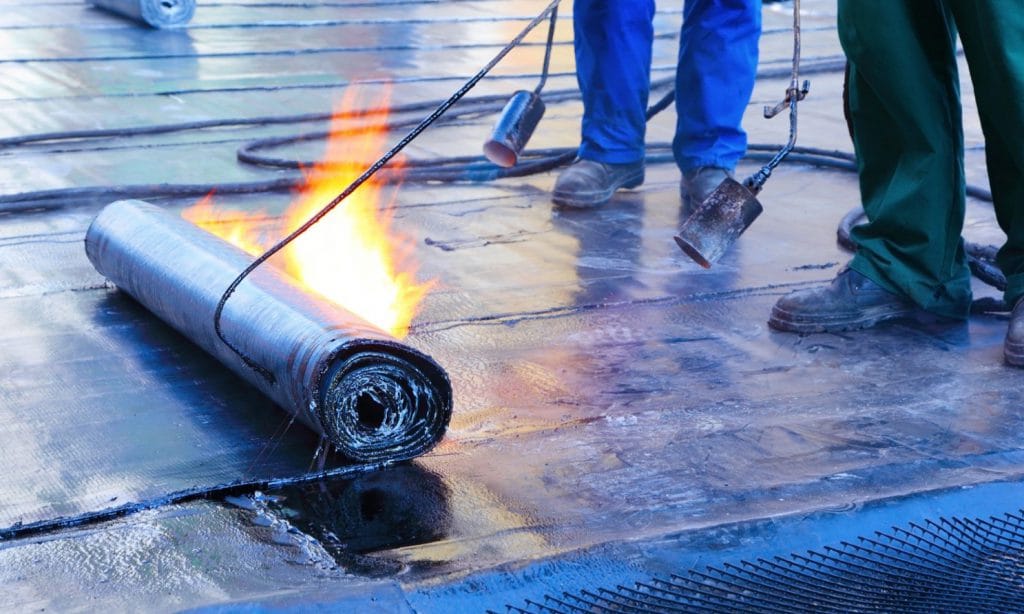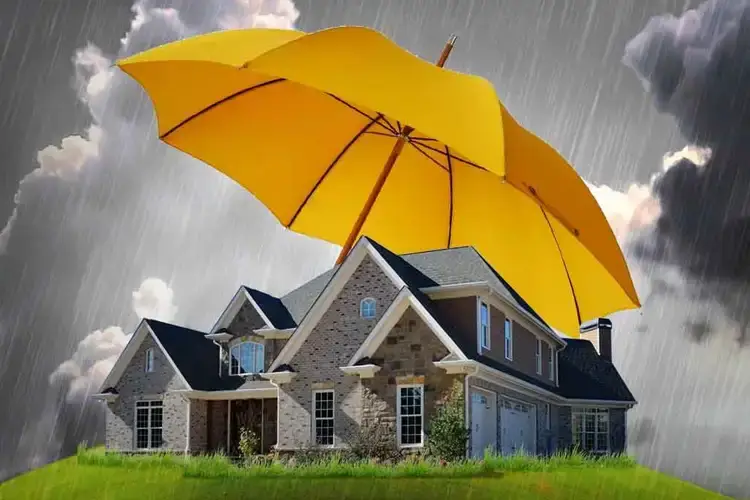How Waterproofing Works: A Thorough Take A Look At Methods and Technologies
Waterproofing is vital for shielding structures from moisture-related damages. It entails numerous techniques and innovations that create obstacles versus water invasion. Conventional techniques, such as compressed clay, exist side-by-side with modern developments like liquid-applied membranes. Recognizing the nuances of these techniques is important for effective application. Nevertheless, the effectiveness of any kind of waterproofing option hinges not only on the techniques utilized however likewise on ongoing upkeep and evaluation. What are the key aspects that affect lasting efficiency?
Recognizing the Fundamentals of Waterproofing
Waterproofing is an important process that shields frameworks from water breach, which can result in considerable damages gradually. This approach involves the application of various materials and methods made to create a barrier against wetness. The main objective is to avoid water from passing through surfaces, which can cause degeneration, mold and mildew development, and architectural instability.Various factors influence the option of waterproofing technique, including the kind of framework, its place, and ecological problems. Comprehending the physics of water motion and the buildings of various materials is important in picking an effective waterproofing solution.Effective waterproofing not only safeguards buildings but also enhances their longevity and integrity. Generally, it is integrated into the layout stage of construction to guarantee extensive security. As awareness of water-related issues expands, the significance of recognizing waterproofing fundamentals becomes increasingly clear to engineers, contractors, and homeowner alike.
Conventional Waterproofing Methods
Traditional waterproofing methods have been made use of for centuries, counting on tried and true techniques and products to protect frameworks from water damage. One of the earliest methods involves using clay, which, when compacted, develops a natural obstacle against wetness. Furthermore, asphalt, a sticky, black material originated from oil, has actually been utilized for its water-resistant residential or commercial properties, frequently put on roofing systems and foundations.Another strategy involves the application of lime-based plasters, which give a breathable layer that enables dampness to leave while protecting against water ingress. Thatch roof covering, a typical technique still seen in some cultures, uses superb waterproofing as a result of its firmly loaded straw layers.Moreover, using stone and brick has actually been prominent, as these materials are naturally resistant to water when properly set up. On the whole, traditional waterproofing techniques stress the importance of picking appropriate materials and building techniques to boost longevity against water breach.
Modern Waterproofing Technologies
Advancements in modern waterproofing innovations have reinvented the method frameworks are shielded from water damages. Cutting-edge strategies such as liquid-applied membrane layers and innovative sealants have enhanced the effectiveness and flexibility of waterproofing services. These modern technologies allow for seamless application, reducing the risk of leaks and ensuring comprehensive insurance coverage over intricate surfaces.Moreover, the combination of wise innovations, such as wetness sensors and automated monitoring systems, allows real-time evaluation of waterproofing efficiency. This aggressive technique assists in timely upkeep and minimizes long-lasting repair service costs.Additionally, innovations in spray-applied layers supply quick application and outstanding bond, adapting to numerous substrates while providing robust protection. Strategies like polymer-modified systems better boost versatility and toughness, making them ideal for varied environments. Overall, contemporary waterproofing modern technologies not only reduce water intrusion yet also add to the long life and sustainability of frameworks, noting a considerable shift in the sector.
Materials Made Use Of in Waterproofing
The efficiency of waterproofing options heavily relies upon the materials made use of in their application. Various products are employed to produce obstacles against water access, each with unique residential or commercial properties matched for different settings. Typically utilized products include membranes, finishings, and sealants.Liquid-applied membrane layers, typically made from polyurethane or acrylic, create a seamless obstacle that adjusts to complex surfaces. Sheet membrane layers, typically constructed from rubber or polycarbonate, offer toughness and are ideal for larger locations. Furthermore, cementitious waterproofing materials, composed of cementitious compounds, give excellent bond and flexibility.Sealants made from silicone or polyurethane are important for joints and seams, making sure thorough protection. Additionally, advanced materials, such as geo-composite membranes, combine multiple functions, enhancing performance. On the whole, the option of waterproofing products is essential in accomplishing resilient and effective water resistance, tailored to particular job demands and environmental conditions.
Typical Applications of Waterproofing
Waterproofing plays a necessary role in numerous sectors, guaranteeing the longevity and integrity of frameworks. Typical applications include domestic solutions that protect homes, business framework that safeguards companies, and commercial setups that need durable defense versus moisture. Understanding these applications highlights the relevance of waterproofing in preserving both safety and performance across various atmospheres.
Residential Waterproofing Solutions
Numerous homeowners deal with challenges with dampness invasion, making effective property waterproofing services essential. Various techniques exist to address this concern, including inside and exterior waterproofing systems. Inside solutions typically involve the application of sealants and coatings to basement wall surfaces, which help prevent water seepage. Outside methods normally include the setup of water drainage systems and water resistant membrane layers that divert water away from the foundation.Additionally, house owners might consider sump pumps to eliminate water buildup and dehumidifiers to control humidity levels. Correct grading and making use of gutters likewise play an important duty in managing water flow around the home. By carrying out these techniques, home owners can significantly minimize the threat of water damages and mold and mildew development, ensuring a dry and safe living atmosphere.

Industrial Framework Protection
Efficient waterproofing solutions play an essential role in the security of business infrastructure. Drainage & waterproofing company Omaha. These techniques are necessary for guarding buildings, vehicle parking frameworks, and bridges from water damages, which can jeopardize architectural honesty and lead to costly repair work. Common more info here applications include the setup of membrane layers, layers, and sealers that develop obstacles versus dampness seepage. Locations such as basements, roofing systems, and outside wall surfaces are frequently prioritized to guarantee longevity and sturdiness. Furthermore, waterproofing systems can enhance power efficiency by preventing water-related concerns that might cause mold development and deterioration. By implementing durable waterproofing actions, homeowner can secure their investments and maintain functional performance, eventually contributing to the general sustainability of business facilities
Industrial Applications Overview
While various markets encounter distinct obstacles, the need for reputable waterproofing options remains a continuous in industrial applications. Industries such as production, construction, and energy frequently come across settings where moisture direct exposure can jeopardize architectural stability and functional effectiveness. In producing centers, waterproofing is critical for protecting machinery and products from water damage. In building, it safeguards foundations and basements versus groundwater seepage. The energy sector relies upon waterproofing for the defense of equipment in hydroelectric plants and offshore structures. In addition, food processing markets make use of waterproofing to guarantee health and conformity with safety and security criteria. On the whole, efficient waterproofing options are necessary for boosting resilience, safety, and productivity across various industrial setups.
Maintenance and Long Life of Waterproofing Solutions
Although waterproofing options are designed to offer long-lasting security against moisture intrusion, normal upkeep is vital to assure their efficiency and longevity - Landscape drainage Omaha. Routine examinations play a significant duty in determining prospective mapei waterproofing issues such as splits, peeling off, or indicators of water damages. Resolving these problems without delay can stop additional damage and costly repairs.Additionally, cleansing the surface of waterproofed areas assists eliminate dirt and debris that could jeopardize the honesty of the waterproofing barrier. It's also suggested to reapply safety finishes or sealers as suggested by makers to maintain perfect efficiency. Ecological factors, such as UV direct exposure and severe weather, can affect the life expectancy of waterproofing materials, making normal assessment crucial
Regularly Asked Concerns
Can Waterproofing Be Applied in Cold Weather?
The concern of applying waterproofing in winter increases problems about bond and healing. Numerous items may not execute at their best in reduced temperature levels, demanding mindful option and factor to consider of specific guidelines for efficient application.
How Much Time Does Waterproofing Usually Last?
The period of waterproofing efficiency varies based upon products and environmental elements. Usually, it can last from five to 10 years, but normal maintenance and evaluations are crucial to assure peak performance and longevity.
Is DIY Waterproofing Effective and Safe?
The effectiveness and security of do it yourself waterproofing rely on different aspects, consisting of material quality and application method. While some people attain adequate results, others may encounter concerns that compromise long-term security and architectural honesty.
What Are the Indications of Failing Waterproofing?
Indicators of check here falling short waterproofing consist of visible water discolorations, peeling off paint, mold development, mildewy smells, and dampness in wall surfaces or ceilings - Foundation waterproofing Omaha. These indications suggest compromised obstacles, demanding timely inspection and possible removal to avoid further damage
Just how Do I Pick the Right Waterproofing Contractor?
